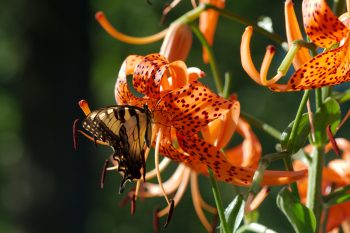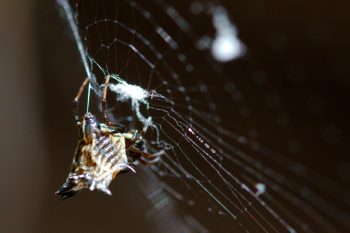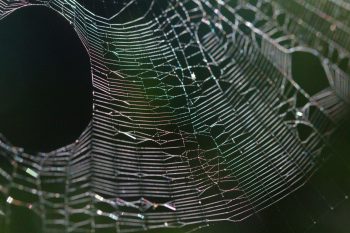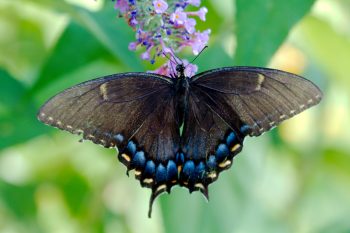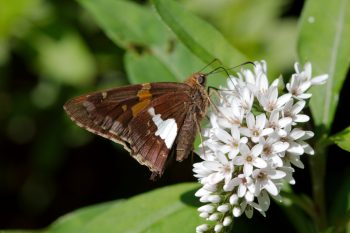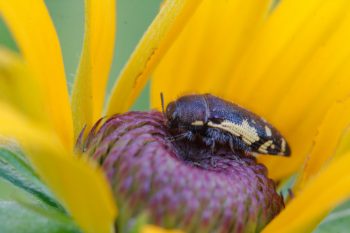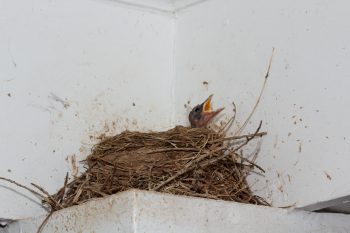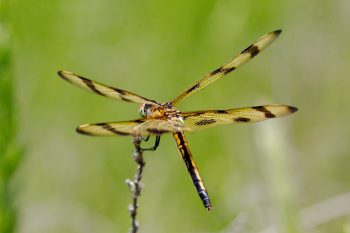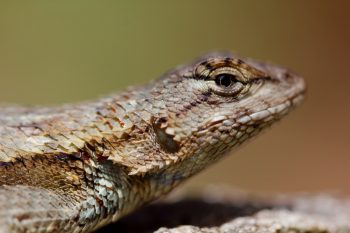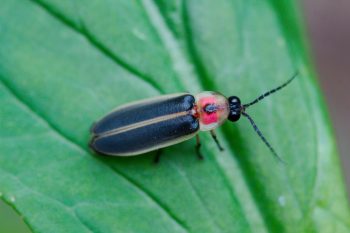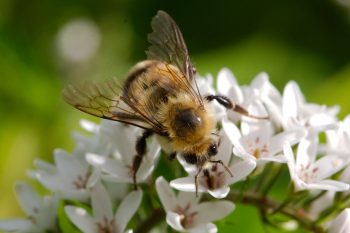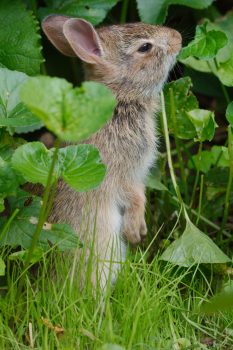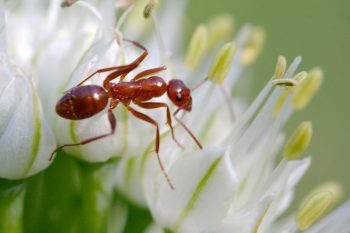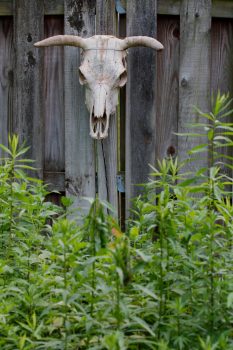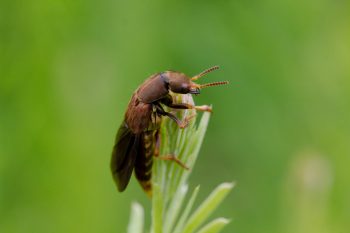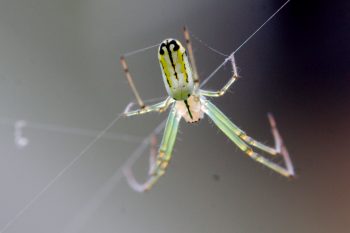The tigers are out in force. We have tiger lilies (Lilium lancifolium) blooming in a few areas in the yard. They are especially spectacular in the morning when the sun is on them. We also have tiger swallowtails (Papilio glaucus) in pretty good numbers. They are mostly on the tiger lilies and on the buddleia bushes and we’ve counted more than ten together on one buddleia bush. Most of them are the standard yellow and black but about ten percent are the darker version that I photographed a few days ago.
Creatures
Tiger Swallowtail and Tiger Lily
Micrathena gracilis (Spiny Micrathena)
A few days ago I had a picture of a spider web, taken in Rock Creek Park (see Thursday, July 18, 2019). I mentioned that it belonged to a spined Micrathena (Micrathena gracilis) but the spider wasn’t in the picture. Today we had a little time before church so we walked in the Stadtman Preserve for a little and I saw another spined Micrathena and got this picture of her. It frankly isn’t a great picture but you can see where it gets its “spined” appellation. Sorry I have nothing better for today. Maybe tomorrow.
Spider Web
I stopped and walked into Rock Creek Park on the way home today. It’s a nice, wooded area and generally away from traffic, so I like being there. It’s definitely high summer now and the underbrush is about at it’s deepest but I’m happy to leave the bike path and walk the short distance through the brush to the creek itself. I passed a few spider webs, which isn’t unusual this time of year, but it wasn’t until I got to this one that I stopped. This one had the sun shining on it and that made it a lot easier to photograph. This was made by a spined Micrathena (Micrathena gracilis), one of the orb weavers (family Araneidae).
Northern Flatid Planthopper (Flatormenis proxima)
I took a few pictures of butterfly weed flowers this evening and I might have posted one of them. A little later I noticed this white leafhopper and got a few pictures of it, including this reasonably sharp image. Getting a good picture was made more difficult by the breeze, which was moving the stem the planthopper was on, but this one turned out pretty well. It was sharp enough for it to be identified as a northern flatid planthopper (Flatormenis proxima), one of our more common planthoppers. They do little damage and I left him alone to get what he needed from this plant.
Polygonia interrogationis (Question Mark)
I stopped at Lake Needwood this afternoon to see what I could see. It’s gotten quite hot, with the forecast for hotter still by the end of the week. The butterflies and dragonflies like that sort of weather, and they were out in pretty good numbers. I happened to spot this question mark (Polygonia interrogationis), so called because of a roughly question mark shaped mark on the underside of their hindwings. I got one photo of the butterfly on a shrub and then if flew and landed on my thigh, thus the blue denim of my jeans. I was able to get a few pretty good photos, including this one. I also got one showing the question mark, but I think this is prettier.
Papilio glaucus (Eastern Tiger Swallowtail)
This is a dark-morph (and thus a female) eastern tiger swallowtail (Papilio glaucus) on the buddleia outside our kitchen door. The tiger swallowtails are the most numerous, large butterflies in our garden, followed by monarchs (Danaus plexippus). Otherwise, we only have occasional visitors. There are a lot of smaller butterflies and skippers, particularly small skippers. But the large, gaudy swallowtails are fun to watch and among my favorites.
Epargyreus clarus (Silver-spotted Skipper)
As we were getting ready to leave for work this morning, running a bit late, as we often do, I paused to take a few pictures of butterflies and skippers on the goose neck loosestrife (Lysimachia clethroides) growing by the driveway. This is a silver-spotted skipper (Epargyreus clarus), one of the larger skippers we see regularly in our garden, with a wingspan up to about five centimeters. It is common through most of North America and certainly common for us. They’re easily identified by the large, silvery-white irregular spot on their hind wings.
Acmaeodera pulchella
I went out to photograph flowers this evening but came across this metallic wood boring beetle (family Buprestidae) on a black-eyed Susan. There are twelve dozen species of Acmaeodera in our area and one of the experts at BugGuide.net identified it as Acmaeodera pulchella, sometimes known as the flat-headed bald cypress borer. We’re not really in bald cypress country but they feed on a pretty wide variety of trees, so that’s not really an issue.
Halloween Pennant (Celithemis eponina)
I know I’ve posted a picture of a similar dragonfly recently, but I didn’t get a lot of great pictures today so this is what I have. This is also, I think, a better picture than the one previously posted. I had originally labeled that one as a calico pennant (Celithemis elisa) but I’ve rethought that and have relabeled it as a Halloween pennant (Celithemis eponina), the same as this one. It’s a handsome dragonfly, whatever it is. I had tough time getting close enough for this picture, so I’m relatively pleased with it.
Baby Robin
The American robins (Turdus migratorius) nesting outside our front door are back to raise a second clutch. There were three in the first batch and another three now, although this photo only shows one. I don’t stay out to take pictures for very long, as that tends to keep the parents away. On the other hand, they built a next in a high traffic area and we’re not going to stop using our front door for them. They grow quite quickly and we watched the last set fledge and these three will be out before you know it. I’m thinking about doing putting something on this ledge to keep them from building another nest here next year, though. There are plenty of other nesting sites for them to use.
Halloween Pennant (Celithemis eponina)
I went out to the vacant lot next to my office today. It was quite warm but the weather patterns promise hotter weather ahead. I got a few pictures of an orbweaver spider (Leucauge venusta) but since I posted one of those recently, I’ve decided to go with this pennant, probably a calico pennant (Celithemis elisa). I also got one, not so good photo of a tailed blue, but I’m holding out for a better picture before I post one of those.
Note: I labeled this as a calico pennant (Celithemis elisa) without paying close attention to detail. I’m relabeling it as a Halloween pennant (Celithemis eponina).
Eastern Fence Lizard (Sceloporus undulatus)
After helping Jean pack up all the paraphernalia from yesterday’s wedding and reception and then a quick trip into town for breakfast (since the resort punted on supplying the complementary breakfast they had promised), Cathy, Dorothy and I went for a walk to some stone ruins on the property. When we got to the ruins, Cathy (I think) said something about it being a good place for snakes. Sure enough, there was a mid-sized eastern ratsnake (Pantherophis alleghaniensis) sunning itself in a crack in the wall. A few minutes later, when Cathy screamed, Dorothy and I assumed it was another snake but it was this eastern fence lizard (Sceloporus undulatus), just a little closer than Cathy had been prepared for. I was able to get a few good pictures before it darted away. This is a male, evidenced by the blue patch just visible on the lower part of the neck. It also has a pretty significant infestation of orange mites or some other sort of pathogen.
Firefly
This firefly, a beetle in family Lampyridae, probably in the genus Photinus, was on a weed in the back of our garden this evening. According to BugGuide.net there are 34 described species in this genus and identification of a single specimen by morphology alone is often impossible. So, I’m not even going to try. It’s a firefly and that’s good enough. One interesting fact about fireflies is that females in the genus Photuris are known to lure in males of Photinus species and eat them in order to obtain a defensive, steroid-like compound that they contain.
Eastern Bumble Bee
I went out looking for pictures as usual this afternoon, when I got home from work. There is Campanula in bloom in the yard, and I took some pictures of those flowers. They don’t tend to come out the same color in photographs as they are in real life. Not entirely sure why. Then I moved over to the gooseneck loosestrife (Lysimachia clethroides), which is a real attraction to the bees. It’s quite invasive and I really would recommend against planting it in the strongest language, but if you already have it, you might as well enjoy the bees. There were a few honey bees but mostly it was the common eastern bumble bees (Bombus impatiens) that were moving quickly from flower to flower.
Baby Cottontail
I was in the back yard photographing a few different insects this afternoon. I started with a little, green sweat bee on a weed by the patio, but those didn’t turn out very well. Simply not enough light to get a short enough exposure. Then I got down on the ground and took a bunch of pictures of some little leaf hoppers (Family Cicadellidae). Those turned out well enough, although the little critters are pretty small so it’s hard to get a good, sharp photo with the equipment that I have. Also, they were somewhat back lit, so getting the proper exposure was tricky.
Then Dorothy and I were over near the gooseberry bush and while Dorothy was picking gooseberries for some individual pies for dessert, I was able to get close to this little, baby eastern cottontail (Sylvilagus floridanus). It’s hard to get the scale from this picture but the little bunny could easily fit on the palm of my hand. At first he was underneath the leaves of the wild violets that are everywhere in the yard. Then slowly he came out and I was able to get a bunch of good pictures from fairly close range.
Ant
I took some pictures of flowers and plants in the back yard this evening. I had gotten down onto the ground to see if I could get a good picture of a syrphid fly on an allium flower. I got a few pictures but they weren’t as sharp as I would have liked. Then I noticed this ant on another allium and got a handful of pictures of it. They aren’t all that sharp, either, but will have to do, because I didn’t really get anything better. I’m pretty happy with the framing of this picture and the exposure, but the focus isn’t that great. In my defense, this little fellow was moving around quite a bit and the light was starting to wane a little.
Cow Skull
A little over four years ago, Dorothy was preparing for an exhibit at a small gallery in Richmond. It was a somewhat varied exhibit and included quite a few ink drawings that were drawn from her sketch-book journals. There were a few water colors, which I liked very well. There were also a few painted bones, including this cow skull. Where did she get a cow skull? You very well might ask. She happened to ask our good friend Janis (don’t spell it Janice, there’s no ‘nice’ in Janis) if she had any animal skulls around their farm. She said she had a few and Dorothy was welcome to them. That’s where it came from. Since the show in the winter of 2015 it’s been hanging in Dorothy’s bedroom. She decided this week that she wouldn’t mind getting rid of it but she didn’t want to simply throw it away. So, it’s now hanging on the fence in our back yard. I like it. Yes, we’re those people.
Rove Beetle
I wen out again today to see what I could see. The sky was overcast so the sun wasn’t so hot. The dragonflies were also not about in such great numbers. I did get a few pictures,though, including some of this beetle that I think is a rove beetle, Family Staphylinidae, the first or second largest animal family, with somewhere around 56,000 species in 3500 genera. Only the ichneumon wasps, family Ichneumonidae is larger, with an estimated 60,000 species. Anyway, there are some 4,400 species of rove beetle in our area. You’d think you’d see them a lot more often.
Orchard Spider (Leucauge venusta)
We’re moving from the flowers-of-spring period into the insects-of-summer. Along with the insects come those creatures that prey on them, most notably the spiders and related creatures. Of course, birds, bats, and even other insects prey on insects, but I have a special fascination with spiders. They are not, I am led to believe, universally admired. I suppose I understand that. Nevertheless, I think they are quite beautiful, at least some of them are. This is Leucauge venusta, the orchard orbweaver, and a common resident in our area. It’s so delicate and looks like it could be made of glass. It’s been said that you are never more then six feet from a spider. Even if that’s not literally true, it’s probably mostly true. Sleep well.

